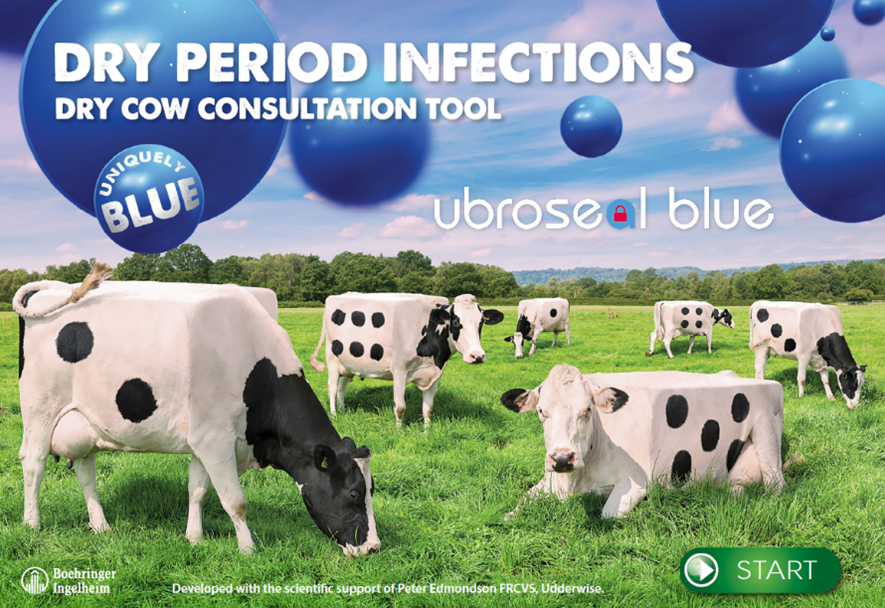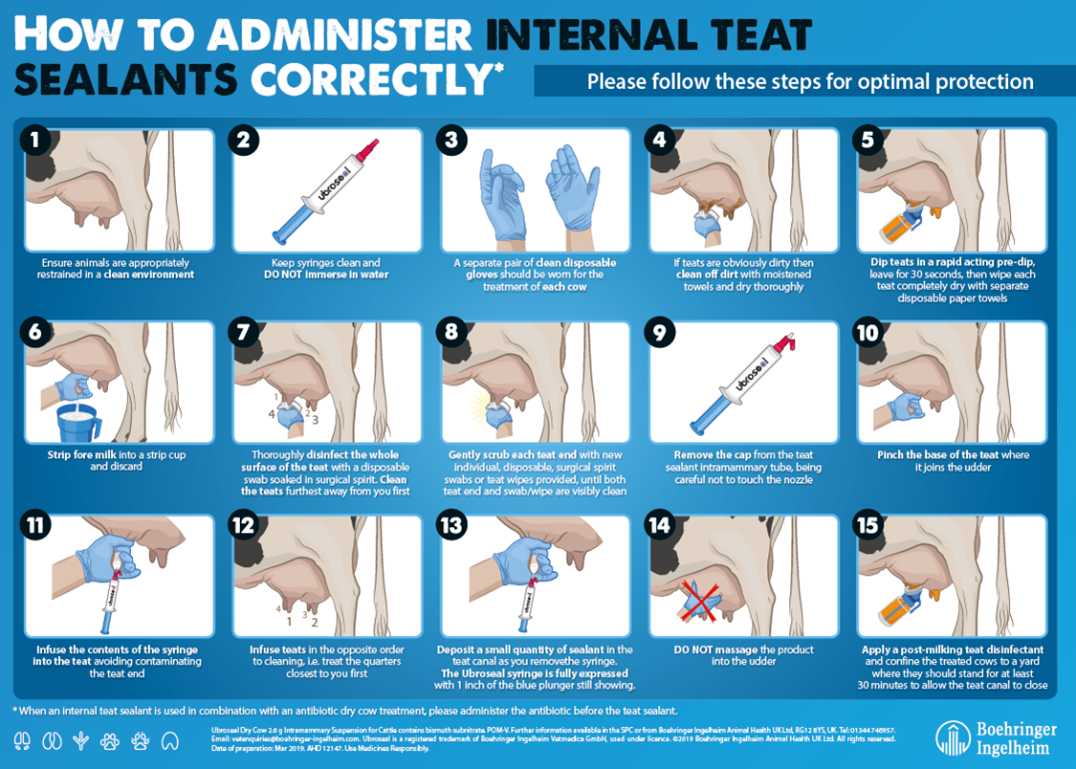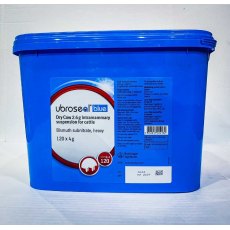Keeping early lactation mastitis under control
When a cow gets mastitis in the first month post calving, the chances are she picked up the infection during the dry period. Cows are particularly susceptible to picking up new infections at the start and the end of the dry period. These infections can easily go undetected, as they’re suppressed during the dry period, only showing up as mastitis in the following lactation – usually sometime in the first 30 days. When early lactation cows go down with mastitis, it’s frustrating and expensive, so it makes sense to track down the source of the infection to reduce the risk for other cows – the dry period is the most likely source so that’s the place to focus your attention on.
Dry period check over helps control new infections
A quick review of dry period management every now and then can help keep the risk of infection down and keep early lactation mastitis under control.
The dry cow consultation tool from Boehringer Ingelheim Animal Health is designed to help with this – it’s an interactive tool that helps you and your vet review the most important aspects of dry period management for controlling infections on your farm. Supported by practical guidelines from mastitis expert Peter Edmondson, it helps you assess the risk of dry period infections and focus efforts on the areas that are likely to have the biggest impact.

How does the Dry cow consultation tool work?
It’s a simple three-step process:
- First check the current level of dry period infection on your farm – simple records of mastitis cases are really valuable here - the number of mastitis cases in the first 30 days post calving is a straight-forward way to check for dry period infections
- Less than 1 in 12 cows with mastitis in the first 30 days post calving? – dry cow infection rates are low, early lactation mastitis is well controlled
- More than 1 in 12 cows with mastitis in the first 30 days post calving? – dry period infections are causing a mastitis problem in your herd – the tool can help you identify how to tackle the problem.
- Next review the aspects of dry cow management that are important for infection control – this includes bedding, space, drying off procedures and use of teat sealants. The practical tips from Peter Edmondson help to focus attention on what’s most important and answer questions such as “how much space do my dry cows need?”
- Finally, based on the current level of dry period infections on your farm and the risk of future infections, the tool helps you and your vet decide whether to make any changes, focussing on the “quick wins” first.
Teat Sealants
When it comes to reducing the risk of infections in the dry period, teat sealants are definitely one of the “quick wins”.
The advice from experts is very straightforward – all cows on all farms should get teat sealant at drying off1. Using teat sealants reduces the risk of mastitis in early lactation by 29%2, making it one of the single most effective mastitis prevention measures for many farms.
Training
Correct application is vital to get the best results from a teat sealant – anyone who dries cows off should be trained by their vet in how to use teat sealants. An annual training review is important to ensure protocols don’t start to slip. Parlour posters and videos, available from your vet or from Boehringer Ingelheim Animal Health, help keep best practice front of mind when drying cows off.
What’s new
Ubroseal® Blue from Boehringer Ingelheim Animal Health is the only blue teat sealant available in the UK – the unique blue colour means it’s easier to see when it’s fully stripped out after calving and easier to differentiate from mastitis.

Accessing resources
To access the dry cow consultation tool, parlour posters, videos or information on Ubroseal® Blue, ask your vet or contact vetenquiries@boehringer-ingelheim.com.
The AHDB website has lots of useful information on mastitis control, including a practical guide to mastitis control in the dry period, available on the AHDB website
References
- Bradley et al (2018) Proc. NMC
- Rabiee AR, Lean IJ. J (2013) Dairy Sci. 96:6915–6931.
Ubroseal® Blue Dry Cow 2.6 g Intramammary Suspension for Cattle contains bismuth subnitrate. UK: POM-V. Advice should be sought from the prescriber. Further information available in the SPC or from Boehringer Ingelheim Animal Health UK Ltd. RG12 8YS, UK. Tel: 01344 746957. Email:vetenquiries@boehringer-ingelheim.com. Ubroseal® is a registered trademark of Boehringer Ingelheim Vetmedica GmbH, used under licence ©2021 Boehringer Ingelheim Animal Health UK Ltd. All rights reserved. Date of preparation: April 2022. BOV-0089-2021. Use Medicines Responsibly.
- First check the current level of dry period infection on your farm – simple records of mastitis cases are really valuable here - the number of mastitis cases in the first 30 days post calving is a straight-forward way to check for dry period infections
- 1st May 2022


